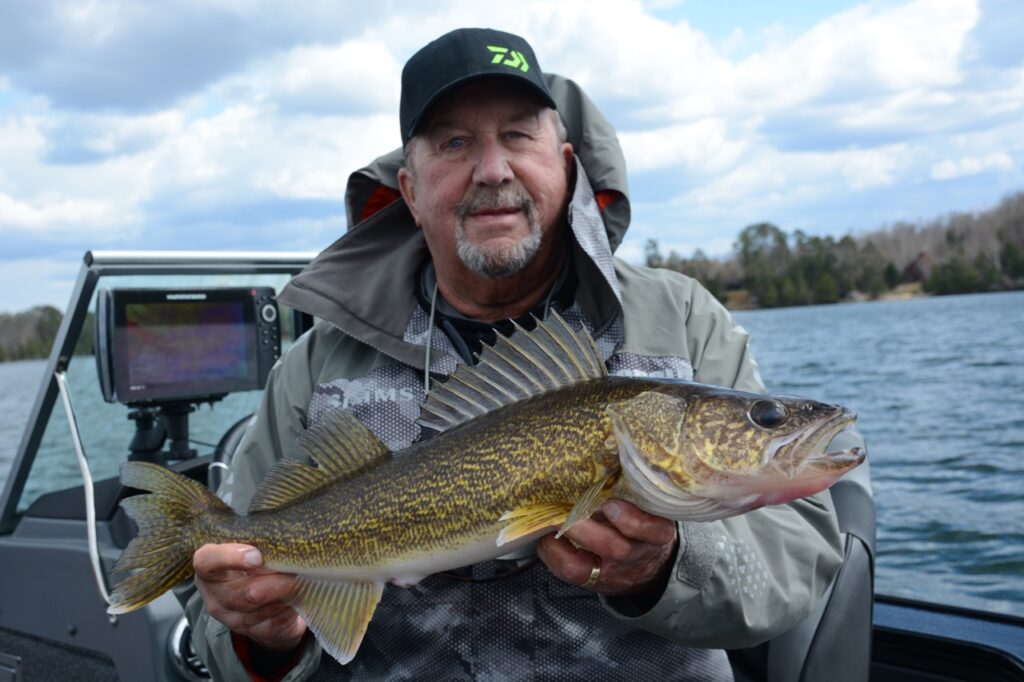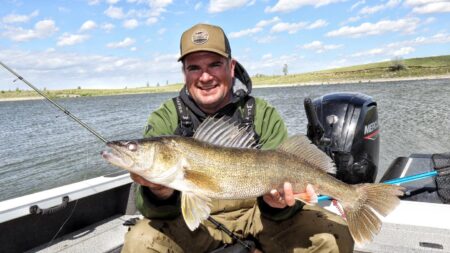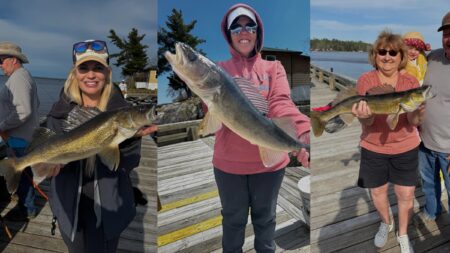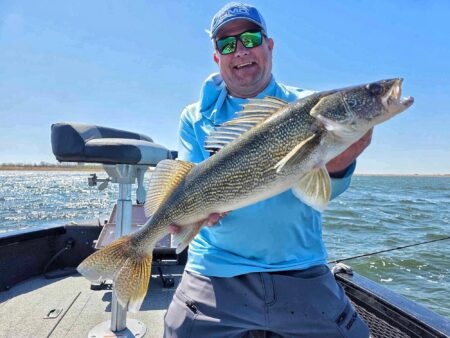
For Grand Rapids, Minnesota-based veteran walleye guide, Tom Neustrom, once he smells the burning of fall leaves by folks cleaning up yards, he knows it’s time to transition to fall walleye patterns. “I like the fall because walleyes tend to bite more consistently and there’s always the chance for big fish, too,” says Neustrom.
“When that water temperature drops from 70 to 75 degrees after a few cold nights down into the 60s that gets the walleyes moving. I move back to jig fishing because you’re keying in on pods of fish again, and I think that’s the important thing to know about the transitional period—when the temperature starts to drop the fish start to feed, so you really need to monitor the water temperature.”
Neustrom’s a fan of jigging in fall because he can cover a lot of water quicker and key in on active fish.
“In terms of depths, I ascribe to the spring forward, fall back saying, meaning move shallow during the day in the spring and move deeper during the day in the fall,” advises Tom.
“We’re not in the 6, 8, or 10 feet we’d be jigging in the spring. I’m looking for fish in 25 to 35 feet of water in the fall during the day – as well as the edges of deep water to shallower water, say 12 to 20 feet of water. In the fall, it’s crucial you pay attention to the edges of breaks, edges of drop-offs, and edges in plain sight on your electronics,” continues Neustrom.
“When you’re looking at your Lakemaster map or whatever map you’re using, you want to make sure you’re keying in on points off shore. Not so much sunken islands out in the middle of the lake but points that dip out into deep water, because one of the things is the deeper drop is where walleyes will congregate in the fall and then move up on the shelf or break to feed.”
“In the fall you want to be right on that edge or dropoff, and I’m a really big fan of points in the fall. I use my Humminbird Down Imaging a great deal in the fall to not only locate these edges but find fish often in better detail than traditional 2D sonar,” continues Neustrom.
The veteran guide’s fall jigging set-up comprises either Northland lead Deep-Vee Jigs or Tungsten Jigs fished on monofilament unless he’s over 30 feet of water where he’ll fish 10-pound Sufix 832 superline with a 10-pound fluorocarbon leader. While a fan of plastics in spring and summer he switches to live bait in fall.
“In fall, I’m looking at a jig and minnow bite. I’m really partial to rainbow chubs for bait; shiners are great if you can get them, but if I have a choice of two handfuls of bait, I’m going to take the rainbow chubs every time.”

With regards to his choice of Northland Tungsten Jigs, he’s a fan of their dense, stream-lined, pill-shaped head which sinks faster because of shape and greater material density by size and weight over lead.
“I can get away with a ¼-ounce where I’d normally fish a 3/8-ounce; and I can fish an 1/8-ounce jig where I’d normally use a ¼ because they sink quicker. They also have a thick, practically unbendable sharp hook on them and a keeper that will keep the bait pinned longer without falling off.”
In terms of rod and reel set-up, Neustrom fishes a St. Croix Legend Elite 7-foot medium-light, extra-fast action spinning rod with a Daiwa Ballistic LT 2000 reel. “The rod has a lot of firmness but the softer tip that telegraphs everything to you; it really becomes an extension of your arm and allows me to key in on finesse bites that a lot of guys can’t pick up.”
As turnover and post-turnover approaches, Neustrom starts working the jig slower.
Neustrom advises: “It’s more of a lift, drag, and drop; lift, drag, and drop. It’s not that popping, snap jigging approach we’d use when the water is a bit warmer. When the water gets into the 50s and high 40s you have to be a bit more deliberate. Slowing down with the drift and drop routine definitely puts more fish in the boat. The walleyes’ metabolism slows down and they don’t want to chase everything; they kind of want it right in front of them.
He concludes: “I tell guys all the time that if it feels like you’re dragging a wet sock on the bottom, that’s usually a pretty good sized walleye that has a hold of your bait. They’ll pick it up and just move along with you, then all of a sudden you have to tighten up your line and set the hook. Another tip: If you miss a fish, put the jig right back in front of the fish again, don’t reel in. It’s a cat and mouse affair, and many times that walleye will hit the jig again.”




